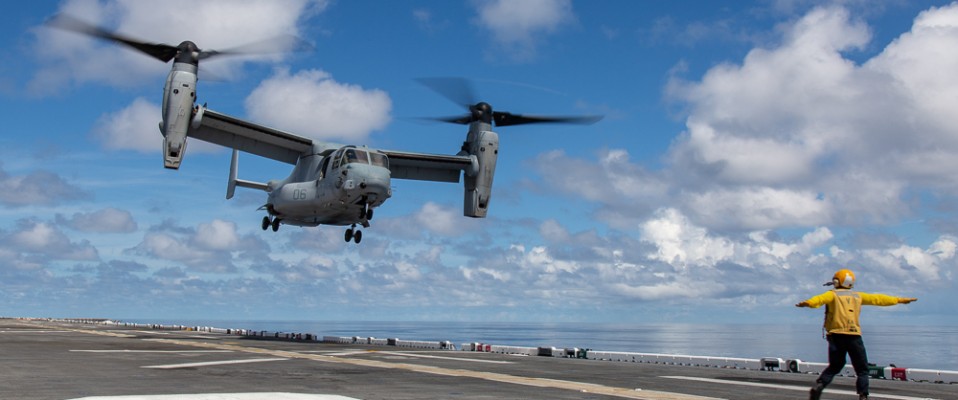Marine Mobility of the ARG\MEU
We observe VMM-264 during deployment work-ups on the USS Kearsarge (Kearsarge Amphibious Ready Group (ARG)) during ARGMEUEX. U.S. Marine Corps VMM-264 (Reinforced) provides the Aviation Combat Element (ACE) for the 22nd Marine Expeditionary Unit (MEU).
Report and images by Todd Miller
September 4, 2018
The MV-22Bs 6000 shp Rolls Royce engines spool up and it climbs away with power to spare. Granted, the 12 passengers on board, VIP and media. There’s not much to see inside, this aircraft is built for utility, not comfort. In this case, the utility to carry 23 combat equipped Marines or any number of internal/external loads from ship to shore. With no windows, the look rearward out the open ramp leaves much to the imagination.
I feel the Osprey surge forward with noted acceleration – we have transitioned from the vertical to the horizontal. After a relatively short flight, the MV-22B banks hard pulling into a tight, ongoing turn that pushes us deep into our seats. Looking out the rear ramp the sea is going by at a steep angle. I assume we have reached the USS Kearsarge and the Osprey signals so by executing its own form of a “break” overhead. The turn bleeds off speed, and I react to the pronounced deceleration as the Osprey transitions to the vertical configuration for landing aboard the U.S. Navy USS Kearsarge (LHD-3) a Wasp-class amphibious assault ship.
A short hover and the MV-22B drops confidently to the deck and is secured. We land moments before a Visit, Board, Search and Seizure (VBSS) exercise, and resources are already gathered “topside.” VBSS is simply one of the many mission sets the Kearsarge ARG and 22nd MEU perfect prior to deployment. Operational pace is high, the Navy and Marines are training to execute in everything from a humanitarian relief effort to an amphibious landing on hostile shores (or with the MV-22B deep inland far from the sea).
The Marine Expeditionary Unit is best described – by a Marine;
Forward-deployed amphibious forces remain a uniquely critical and capable component of our national strategic demands for forward presence, crisis response, power projection and theater security cooperation. The Marine Expeditionary Unit (MEU) and associated Amphibious Ready Group (ARG) provide the Geographic Combatant Commanders with forward-deployed, sea based, expeditionary forces that can operate across the range of military operations. Capable of enabling joint, interagency and coalition forces seamlessly integrating with Special Operations Forces, no other type of force possesses these capabilities together with the ability to sustain itself logistically for significant periods of time.
Operating as a team, the ARG/MEU provides operational reach and agility, as well as assured access for joint force in major contingencies. It is ideally suited to operate forward and from over the horizon to protect America interests.
General James F. Amos, U.S. Marine Corps. “Amphibious Ready Group AND Marine Expeditionary Unit Overview” U.S. Marine Corps.

Typical Configuration of ARG/MEU
We are barely settled and the ACE, Marine Medium Tiltrotor Squadron (VMM) 264 (Reinforced) “Black Knights” have their machines at the ready, along with US Navy MH-60S Knighthawks from HSC-26 of Norfolk, VA.
This is pre-deployment training. The time when the 22nd MEU joins together with the Kearsarge ARG and learns to function as one. Procedures ensure the highest degree of safety possible, but given the nature of the activity – danger is never far away. Add inclement weather, pitching decks and night operations – and one can just slightly grasp what risks these young men and women of the Marines and Navy face. The sea and many forward deployments are inhospitable, and unforgiving. Fast roping, Special Patrol Insertion/Extraction (SPIE), hot arrivals and departures – all are trained too and perfected. Man and machine are put through grueling paces by our nation’s finest so they can serve as first responders to global crises. Maintenance professionals from VMM-264 work tirelessly on board to ensure all platforms are ready to go.
In this case, Marine mobility starts with the U.S. Navy. The Kearsarge ARG serves to deliver the warfighter to theater – to get the Marines close to the objective. The ARG\MEU often goes unnoticed. The general public periodically hears of them when they are involved in relief efforts during humanitarian crises, evacuation of US personnel from areas of unrest, or training with cooperative nations. But there is much more to their activity. I visit the same day Iran announces that they had “complete control of the Strait of Hormuz.” I could not help but think this ARG\MEU may be sailing through the Strait of Hormuz soon – with a message.
There are seven Marine Expeditionary Units in operation. Three are based out of Marine Corps Camp Lejeune, NC (II MEF), three out of Marine Corps Camp Pendleton, CA (I MEF) and one stationed at Marine Corps Base Camp Smedley D. Butler, Okinawa, Japan (III MEF). Of the three West and East coast MEU’s, one is deployed while one is working up to deployment, and the other winding down after deployment. What does it all mean? Aside from the 31st MEU (permanently forward deployed to Okinawa, Japan) there are generally 2 ARG\MEUs underway 24/7/365 – on the water.
Command Element (CE): 22nd Marine Expeditionary Unit, Marine Corps Base Camp Lejeune, NC.
Ground Combat Element (GCE): 1st Battalion, 2nd Marines (1/2) is an Infantry battalion based at Marine Corps Base Camp Lejeune, NC. They belong to the 2nd Marine Regiment as part of the 2nd Marine Division.
Aviation Combat Element (ACE): Marine Medium Tiltrotor Squadron (VMM) 264 (Reinforced) “Black Knights.” They belong to the 2nd MAW, MAG-26, Marine Corps Air Station New River, NC. Aircraft types operated include; AV-8B Harrier II, MV-22B, CH-53E, AH-1W and UH-1Y.
Logistics Command Element (LCE): Combat Logistics Battalion 22 (CLB-22) is a USMC logistics battalion Marine Corps Base Camp Lejeune, NC. They are part of Combat Logistics Regiment 27 and the 2nd Marine Logistics Group.
The Kearsarge Amphibious Ready Group (ARG):
USS Kearsarge (LHD-3), Wasp-Class Amphibious Assault ship
USS Arlington (LPD 24), San Antonio-Class Amphibious Transport ship.
USS Fort McHenry (LSD-43), Whidbey Island-Class Dock Landing ship.
On land, the aviation assets of VMM-264 (Reinforced) are assigned from units where they have honed their platform specific capabilities. Embarked – they work as one aviation unit, as one MEU, as one ARG\MEU.
A combination of instructions bark from the loudspeakers aboard the Kearsarge. Simulated threats are identified, and timely safety reminders regarding deck activity are made. In this dynamic, risk filled environment there can be no tolerance for anything that runs counter established procedures.
Today, the deck is lightly loaded with only a handful of active and parked ACE assets. During deployment the parking area of the deck will be packed with the aircraft, fitted together like a jigsaw puzzle.
The AH-1Ws gunships lift from the deck first. While no AV-8B Harriers fly during my visit, I suspect they would be first up in a hostile environment. Though the USMC has been transitioning to the F-35B, the AV-8B is very capable and the USMC plans to keep them viable to 2026. The Marines Aviation Plan shows a steady increase of capabilities (such as the Intrepid Tiger II EW suite, Communications, Weapons and more) that are incoming to enhance the Harrier capabilities prior to their sundown. Similar can be said of the AH-1Ws – fully capable today, however AH-1Zs will soon be the only helicopter gunship utilized by the Marines. “Zulu” Cobras are already widely in use, it is expected to sundown the “Whisky” Cobras by 2021.
Regardless, the message is clear, firepower is up in the air long before the Marines of BLT 1/2 arrive on the scene. The MH-60 Knighthawks from HSC-26 launch next – with observers and Marines. Marines, feet hanging from the MH-60 are ready to move quickly. The CH-53E launches and somewhere out of sight an MV-22B travels with a full complement of Marines. Additional assets may have launched from other members of the Kearsarge ARG, the USS Arlington (LPD-24) and USS Fort McHenry (LSD-43).
I anticipate that those on the receiving end of this demonstration of assets would find it all very motivating – towards compliance. Friend or foe that submits to boarding can anticipate a professional encounter, perhaps even a pleasant search and seizure, but only if deemed required.
The USMC is about many things, but perhaps at the heart of it is “putting warfighters on the ground, wherever that ground may be.” VMM-264 does their part. Seasoned pilots operating capably night or day in good and poor weather and in both friendly and hostile space.. It is their job to ensure the safety of the Marines, execute the plan and move those warfighters to and from theater.
With 70% of the earths surface covered by water, the mobility and capability of the ARG/MEU is relevant and impressive. Smaller nations without the resources to scan the seas may never see them coming. More advanced adversaries may be aware that the ARG/MEU is in the vicinity – and think twice about their actions.
A handful of Marines (BLT 1/2) wait on board the Kearsarge, extra’s at the ready if required. They are geared up and wait patiently. As the afternoon passes they become aware that their presence is not required for the VBSS. The disappointment is accepted, but palpable. The blend of young and seasoned Marines joined the service for the very reason; to be “first in.” While none I come across desire war, they are ready and to a Marine desire to be at the epi-center of the action.
Out of Uniform, they may be your local Fireman, Police Officer, Teacher, successful Entrepreneur. They are polite, disciplined and focused. They are examples of America’s ultimate wealth – our youth. It is a privilege to encounter them as friend, and to know they are forward deployed around the globe to protect Americans, and American interests.
Aviation Photography Digest expresses gratitude to the II MEF USMC Communcations, Strategy and Operations team, Capt. Joshua L Smith (22D MEU), SSgt. Melissa L. Karnath and Maj. Jordan R. Cochran (II MEF), the entire US Navy Public Affairs team on the USS Kearsage.
Find out more about Todd Miller here: https://milavmedia.com/
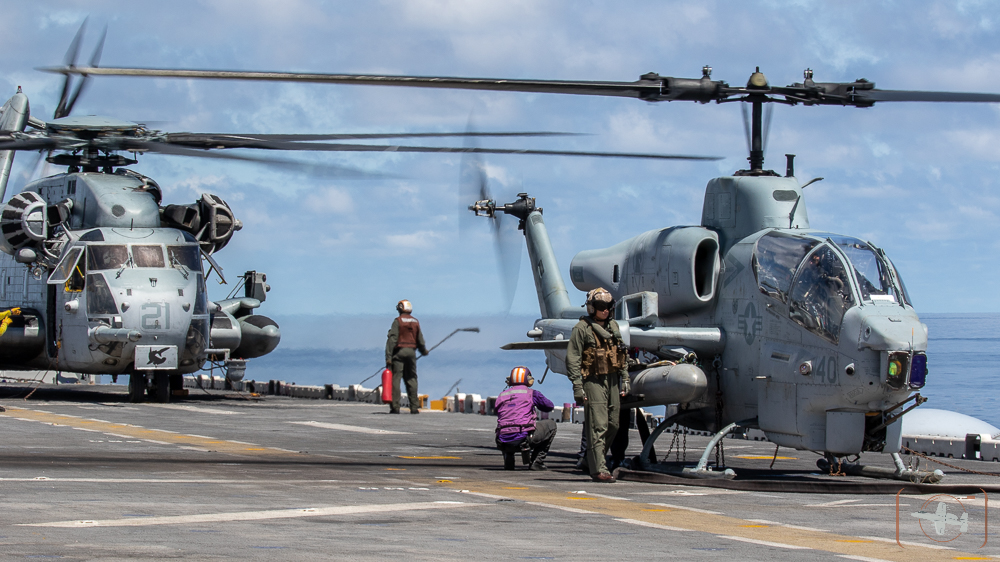
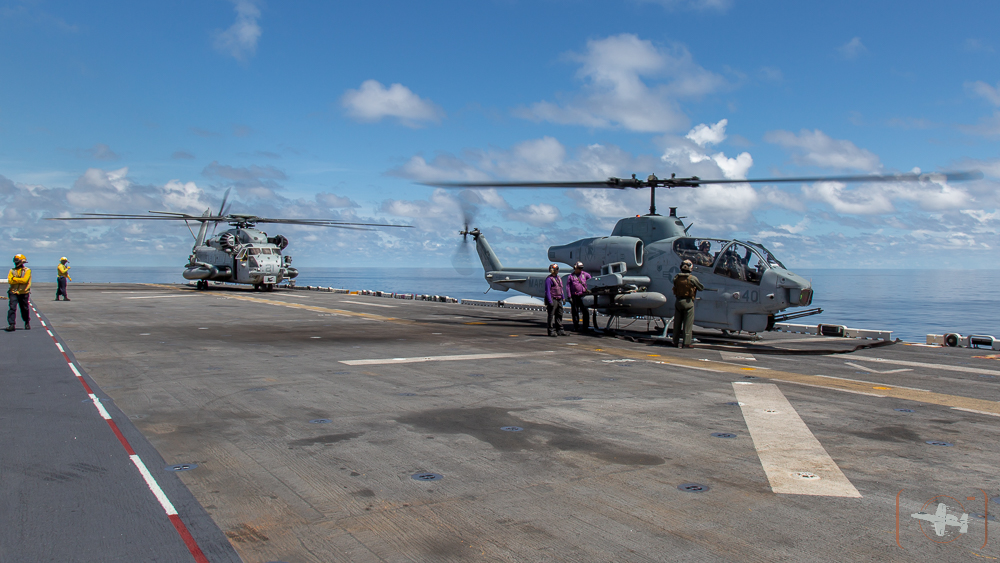
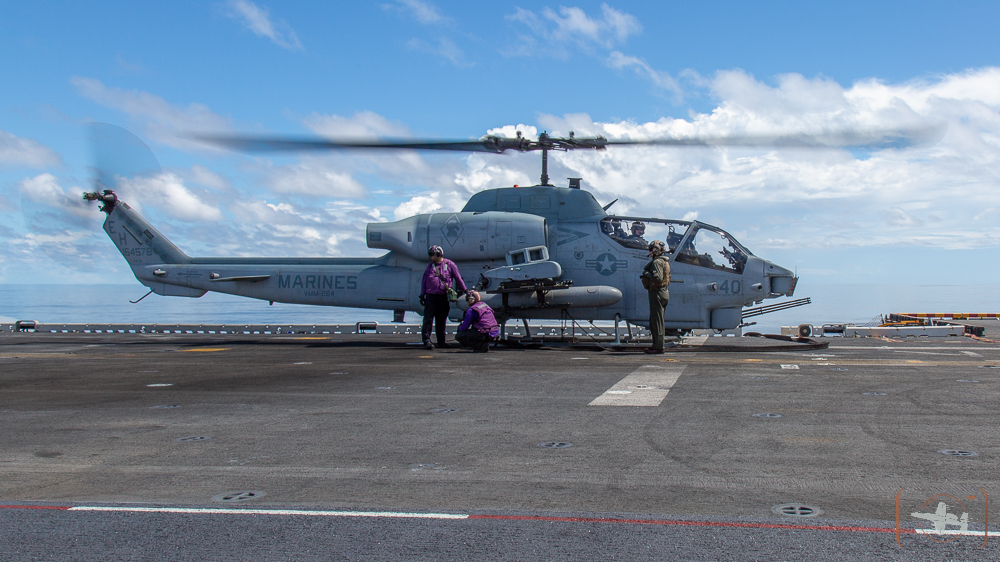
USMC AH-1W Gunship holding on the deck of the USS Kearsarge (Kearsarge ARG). AH-1W is part of Marine Medium Tiltrotor Squadron 264 (VMM-264) (Reinforced), the ACE of the 22D MEU.

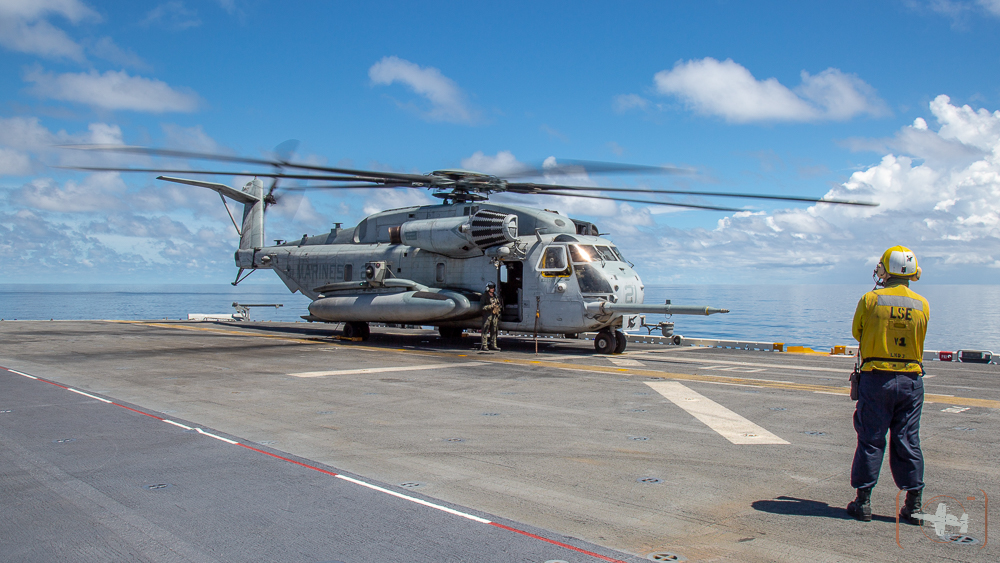
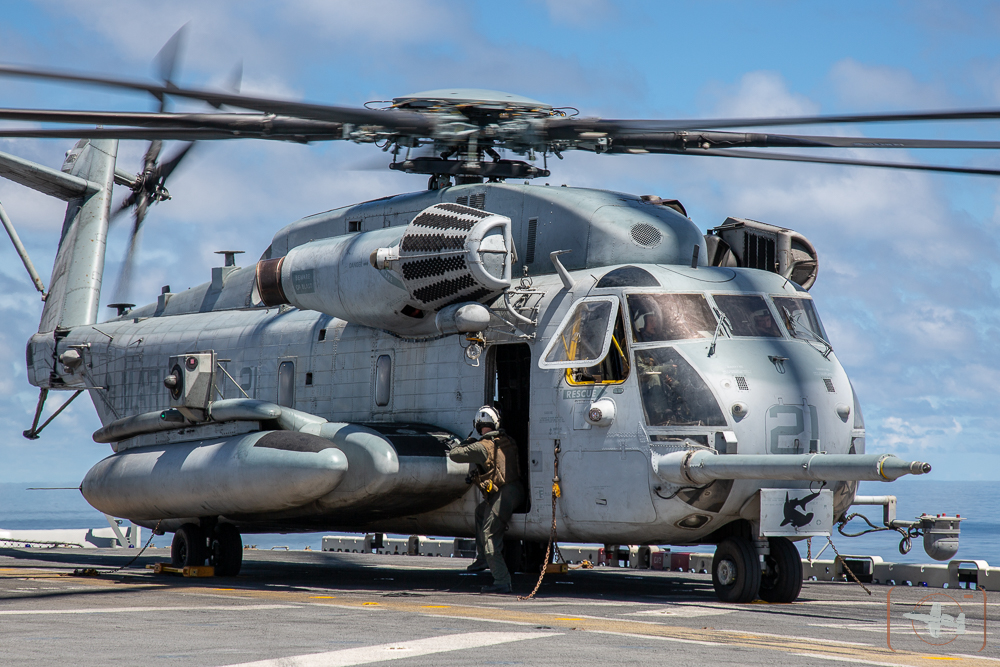
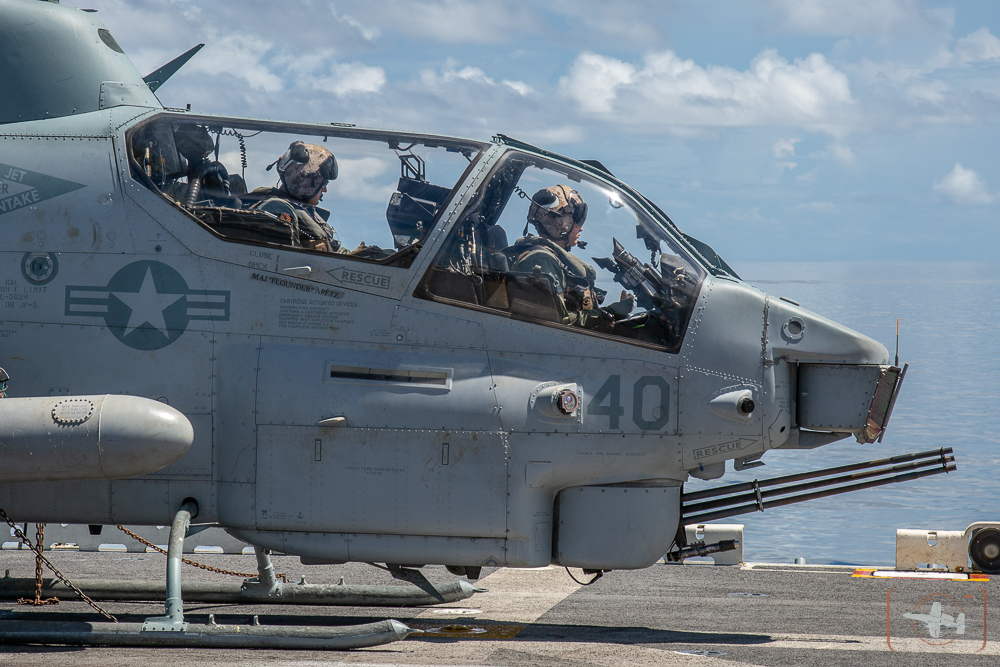
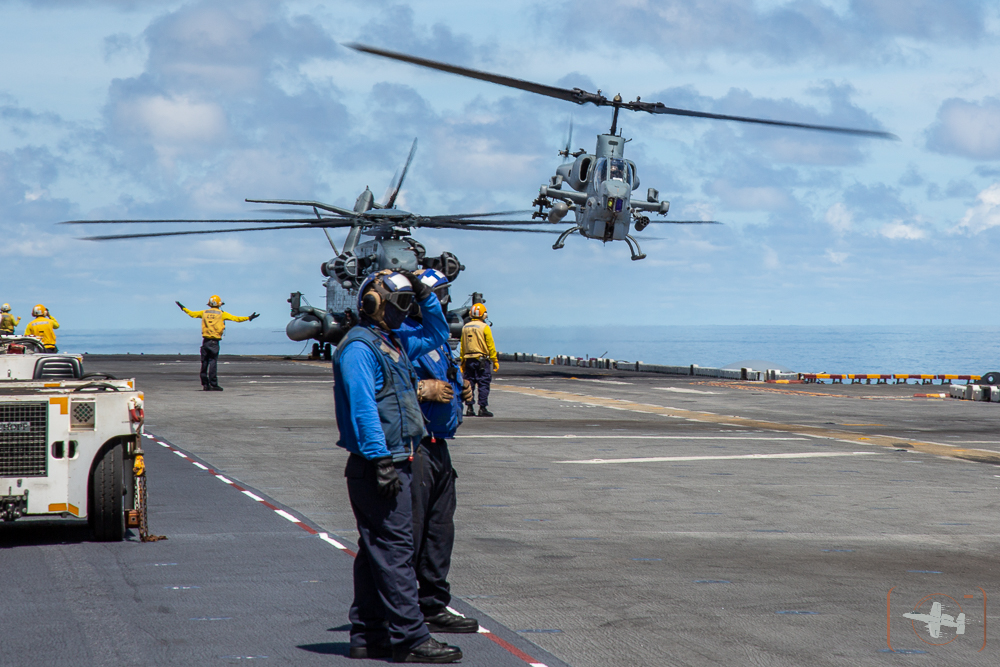
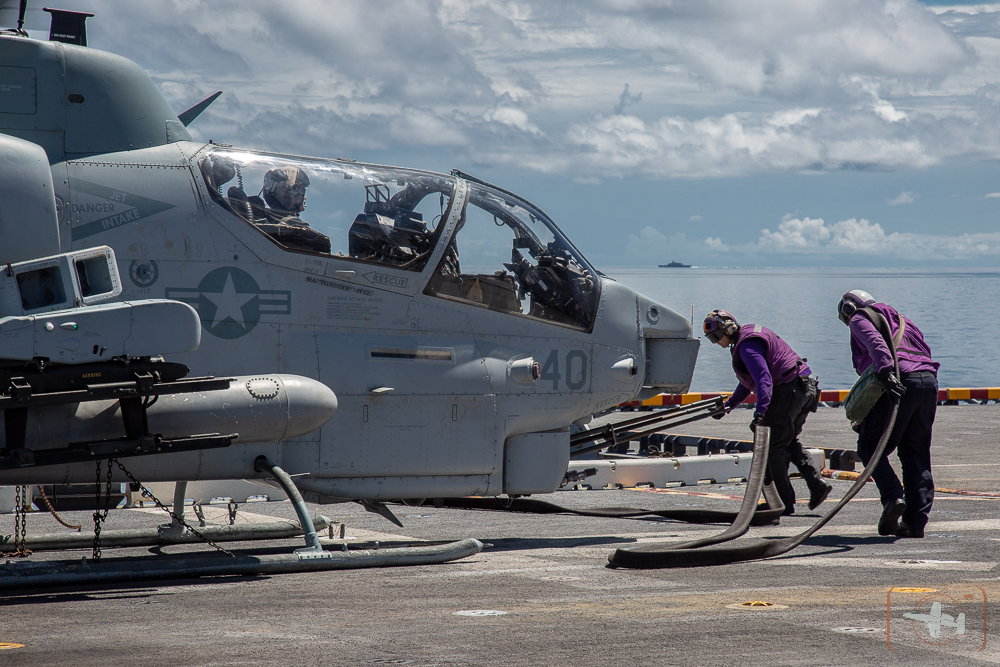
Deck Personnel move to hot fuel the AH-1W Gunship on the deck of the USS Kearsarge. AH-1W is part of Marine Medium Tiltrotor Squadron 264 (VMM-264) (Reinforced).
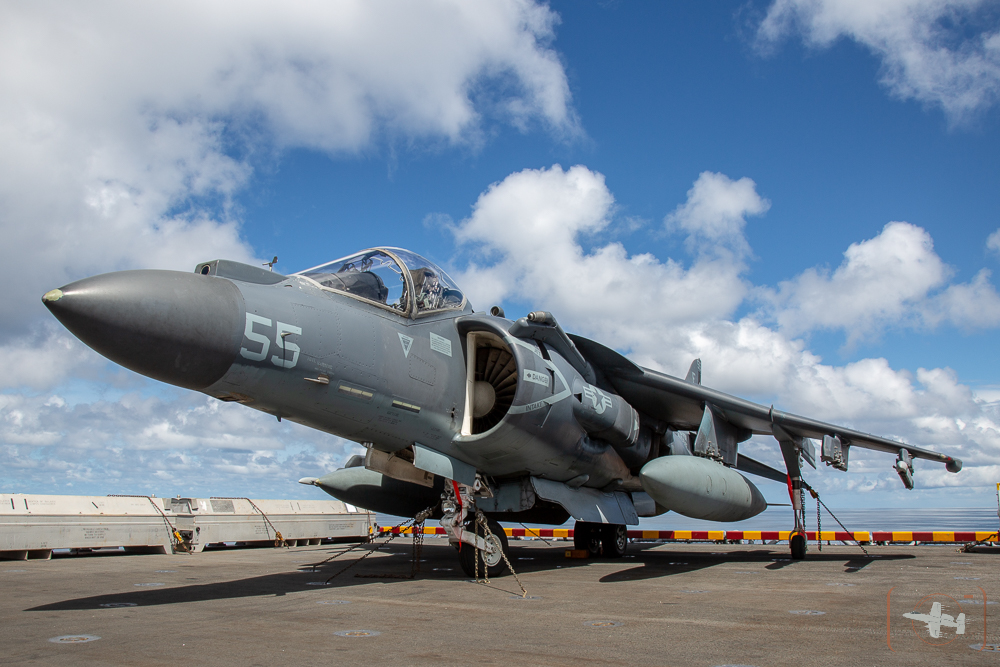

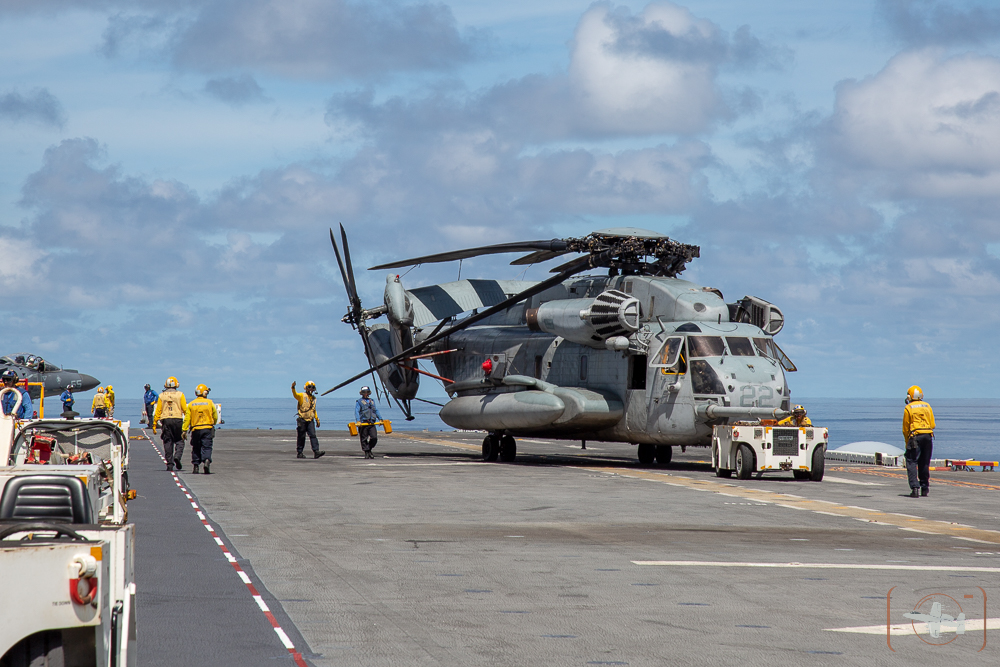

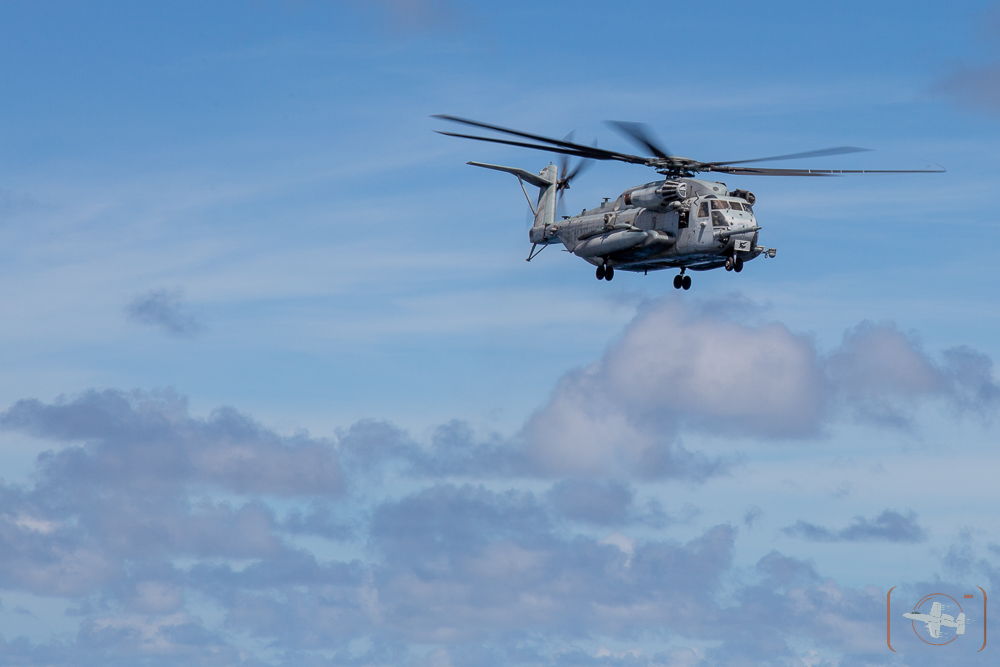
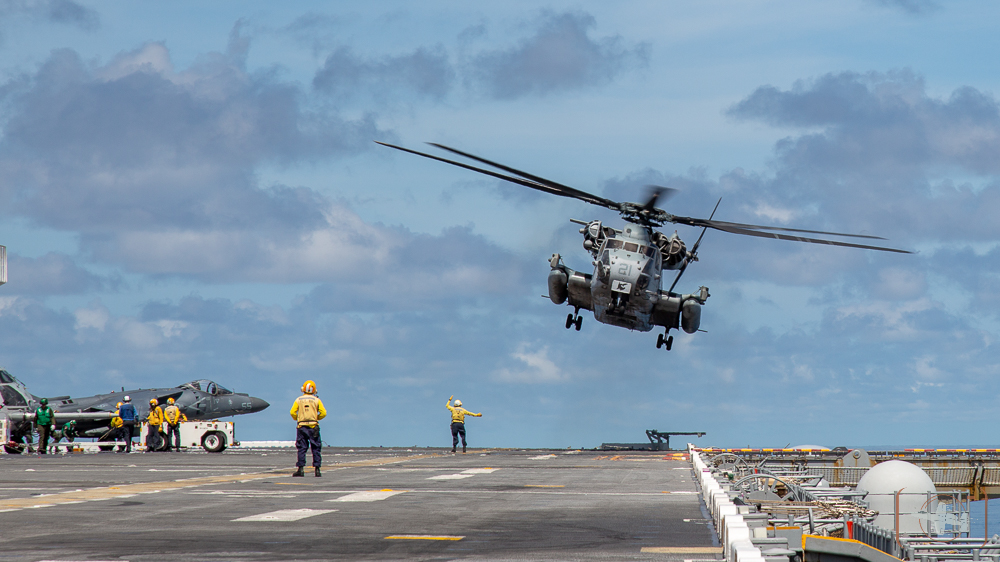
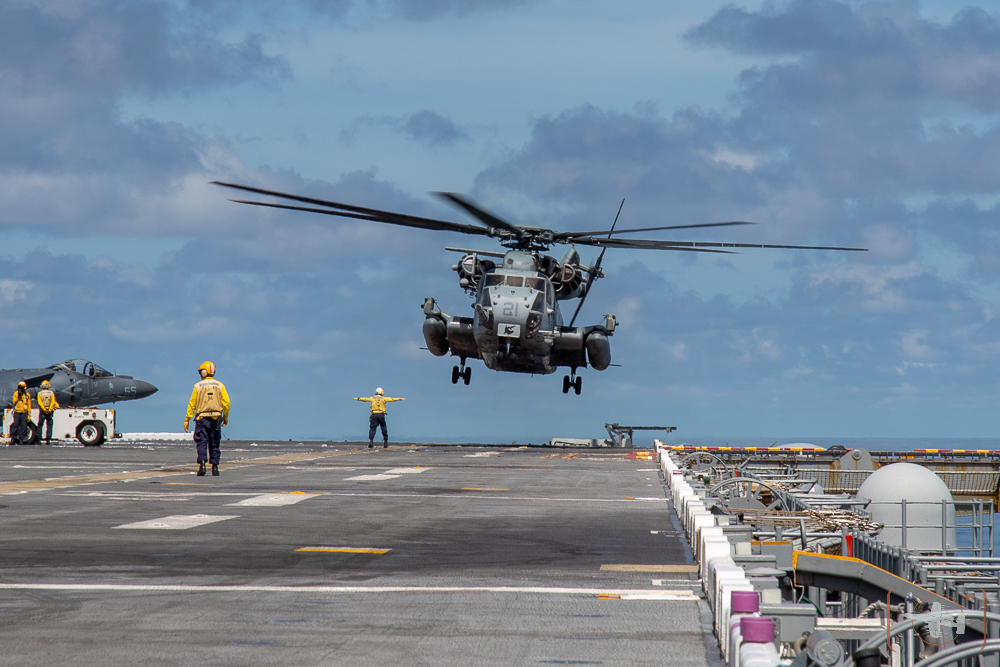
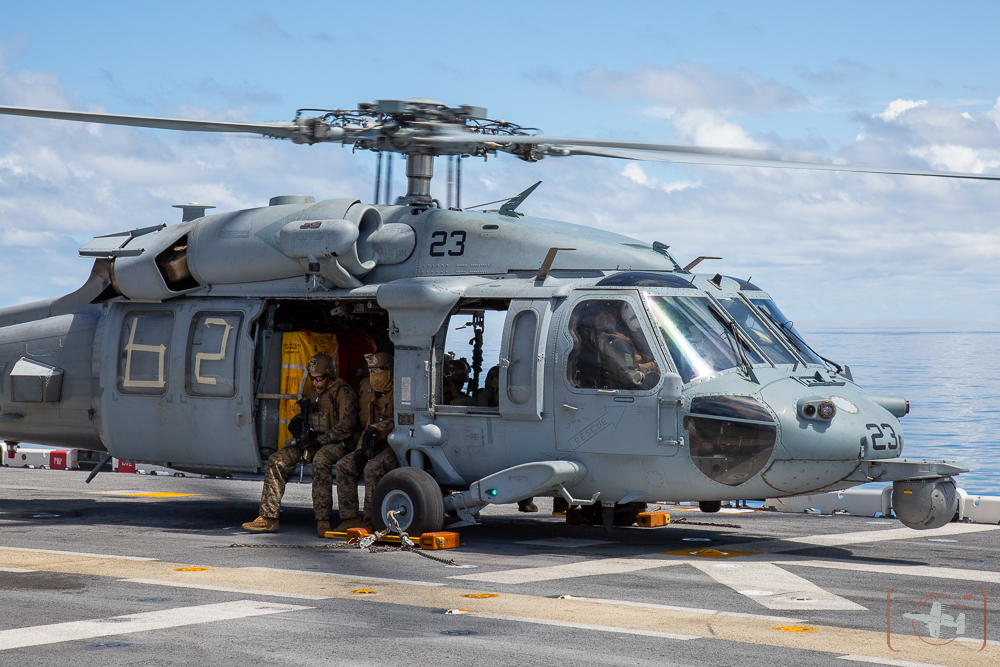
USN MH-60 (HSC-26) loaded with BLT 1/2 from the 22D and holding on the deck of the USS Kearsarge for orders to launch on Visit, Board, Search, and Seizure (VBSS) exercise during MEUARGEX.
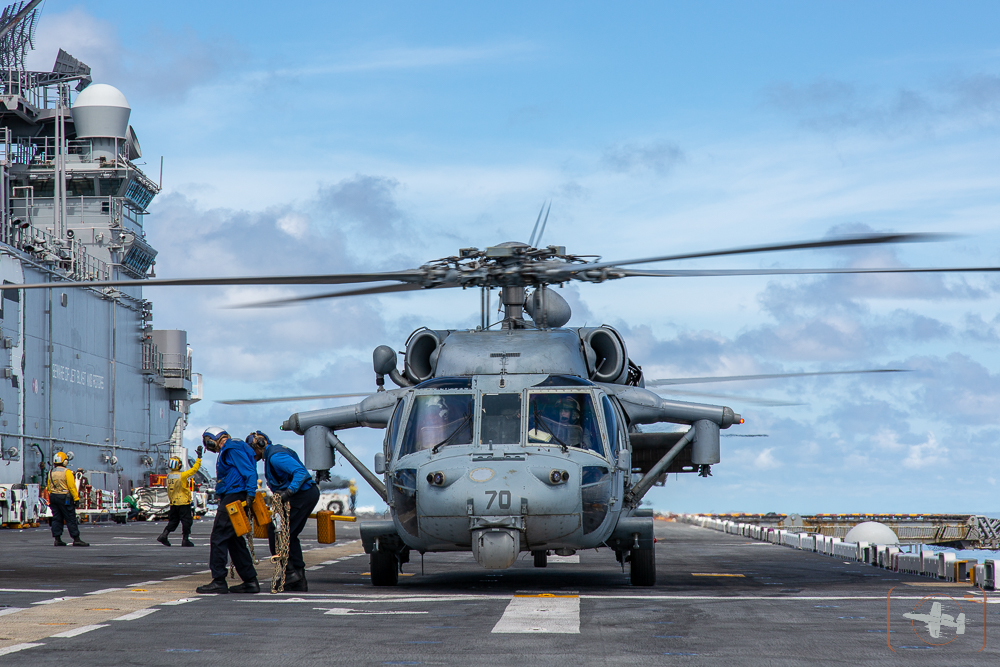

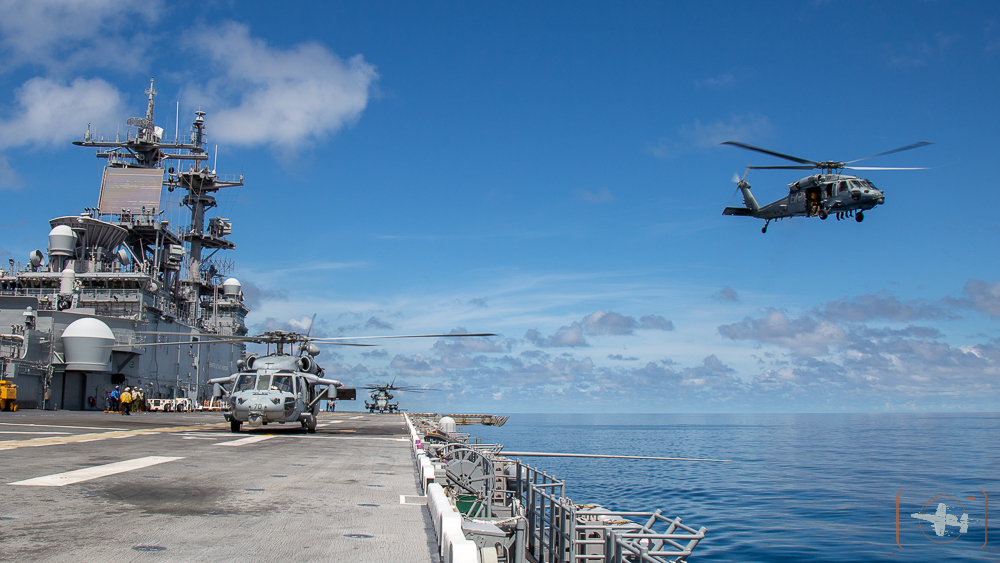
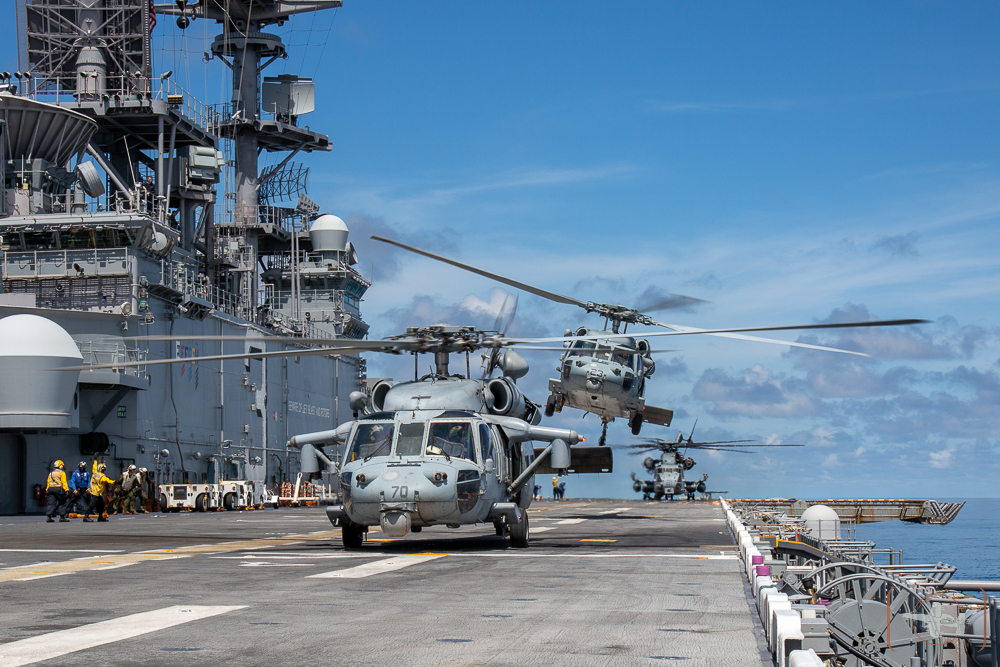
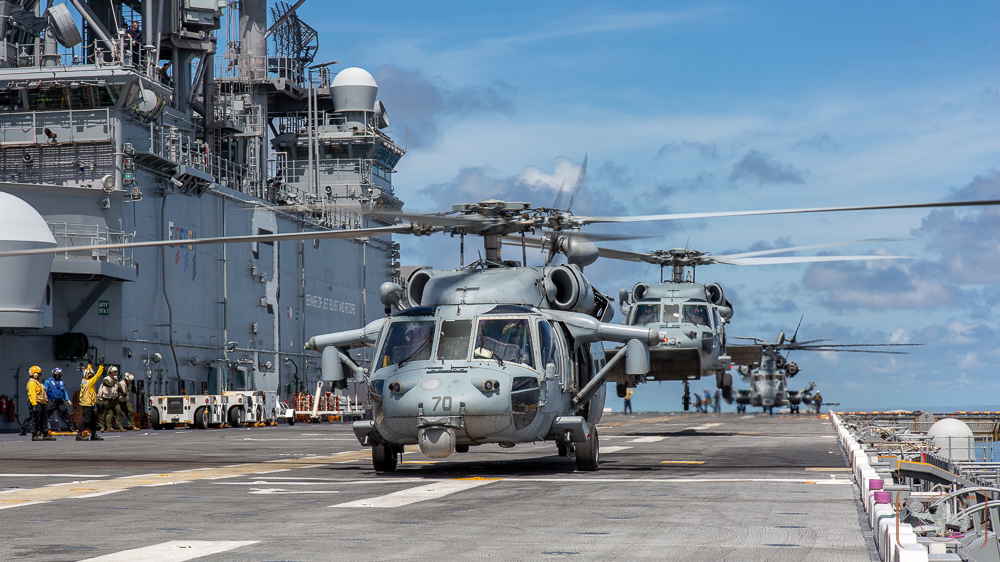
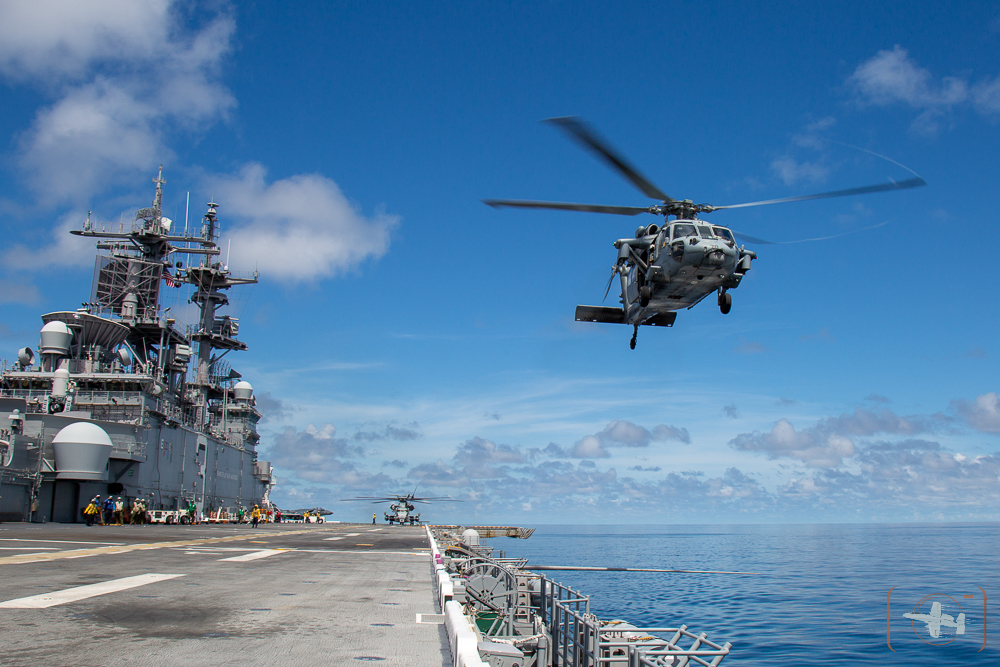
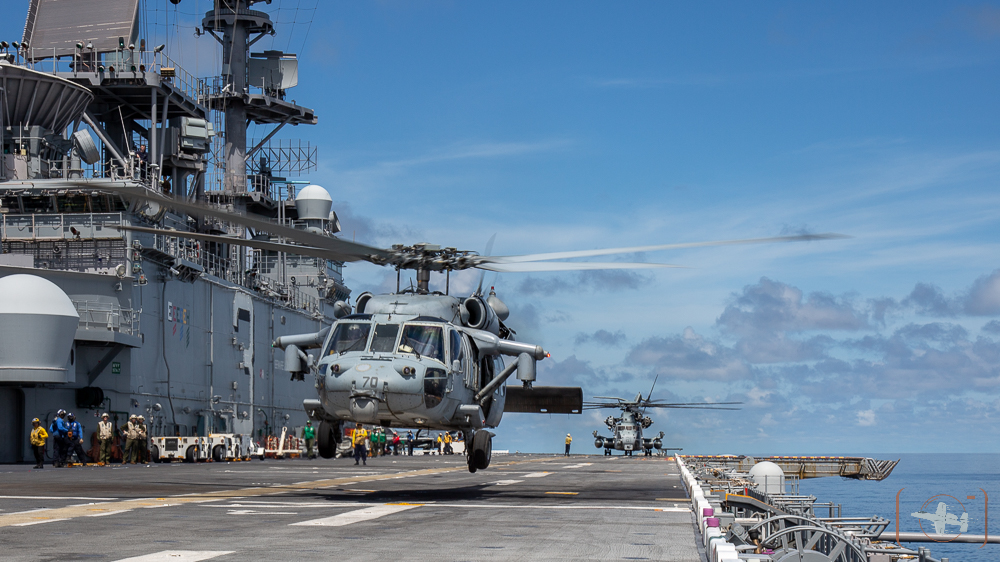
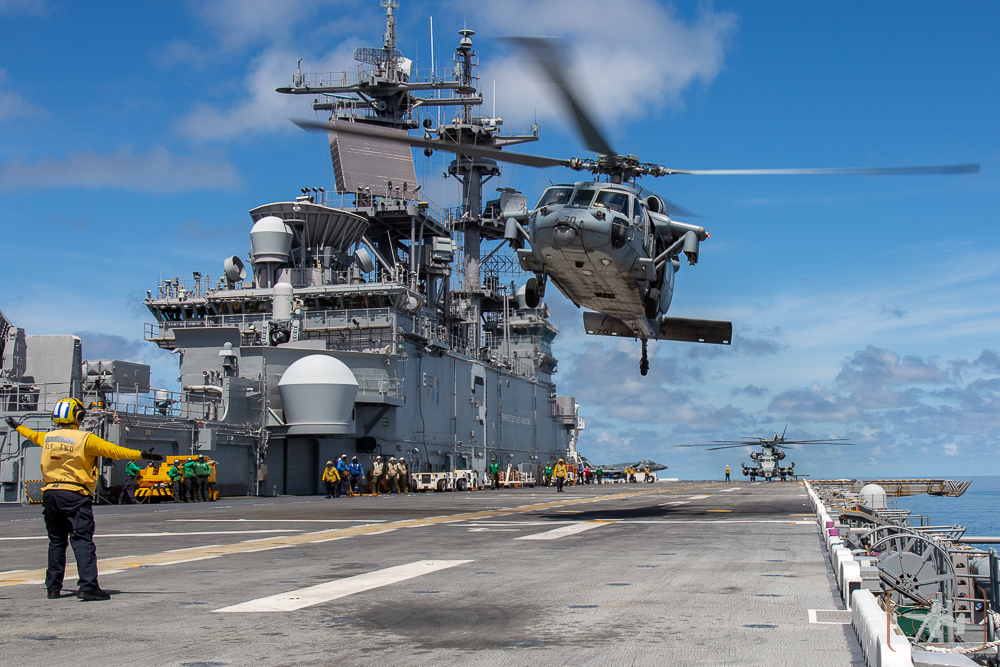

USN MH-60s (HSC-26) & CH53 Hold
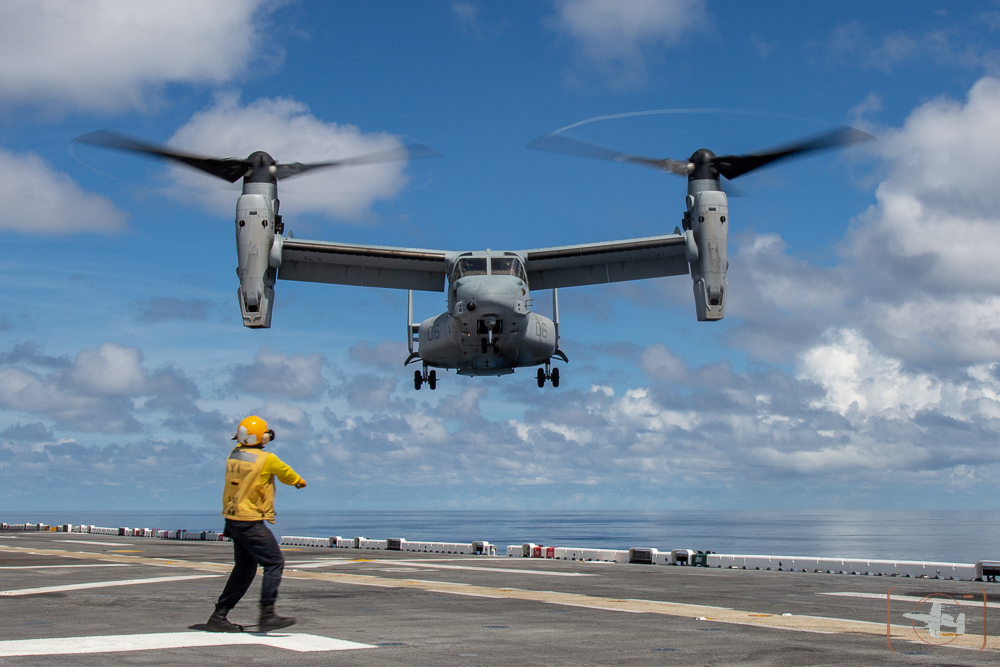

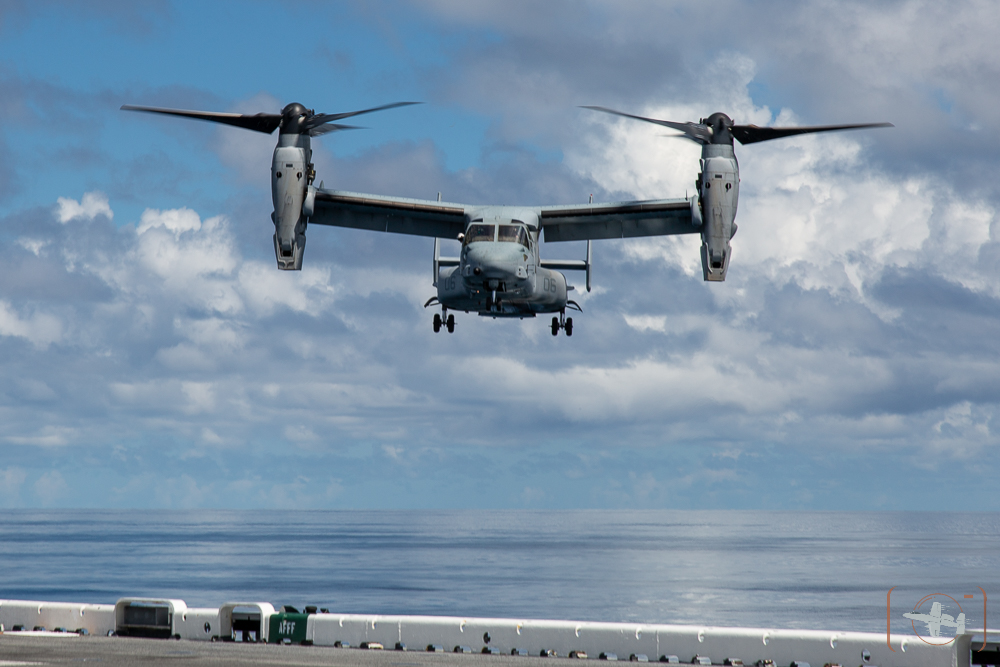
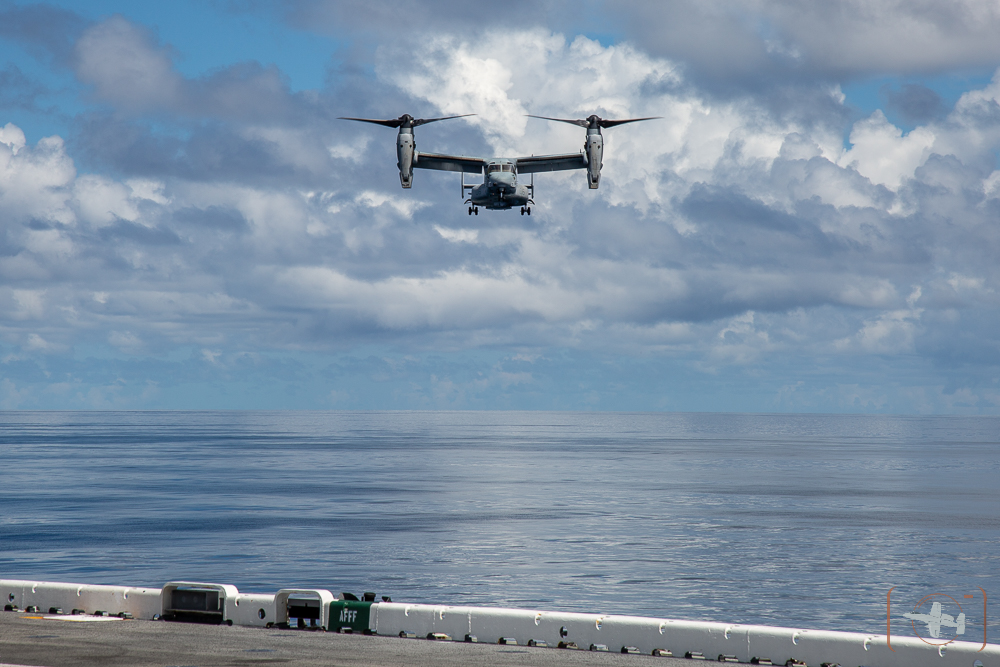
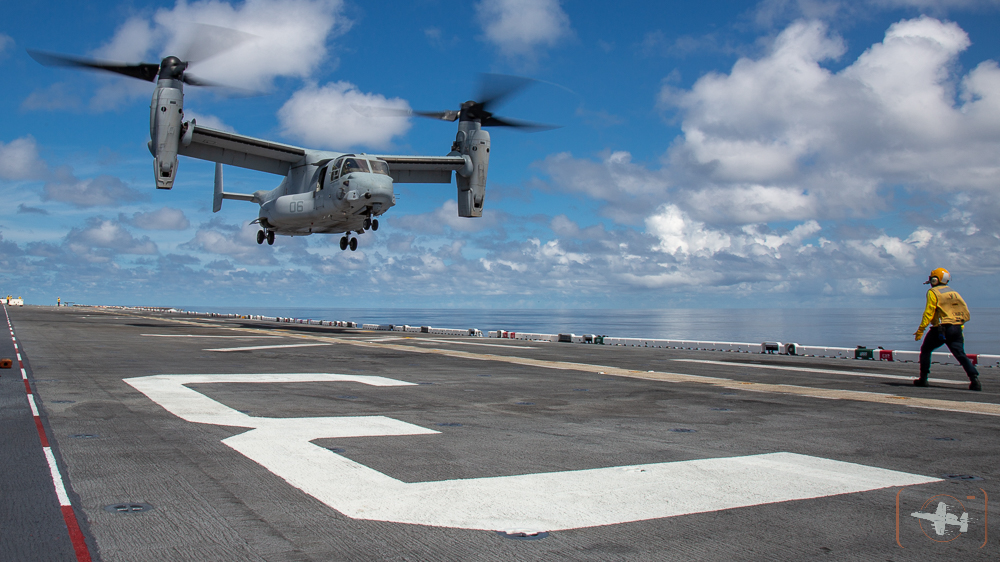
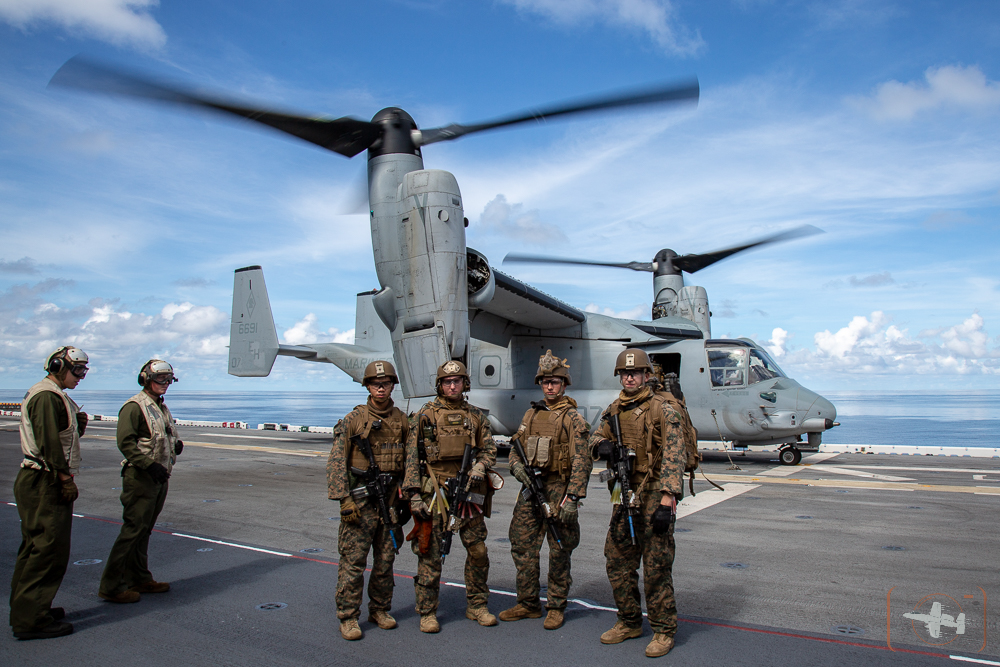
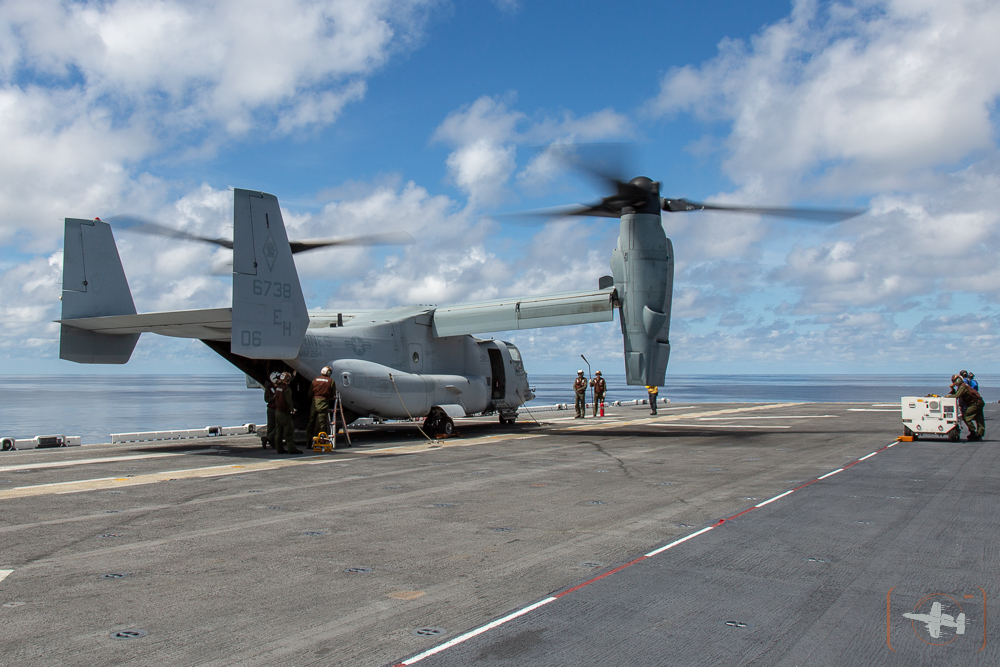
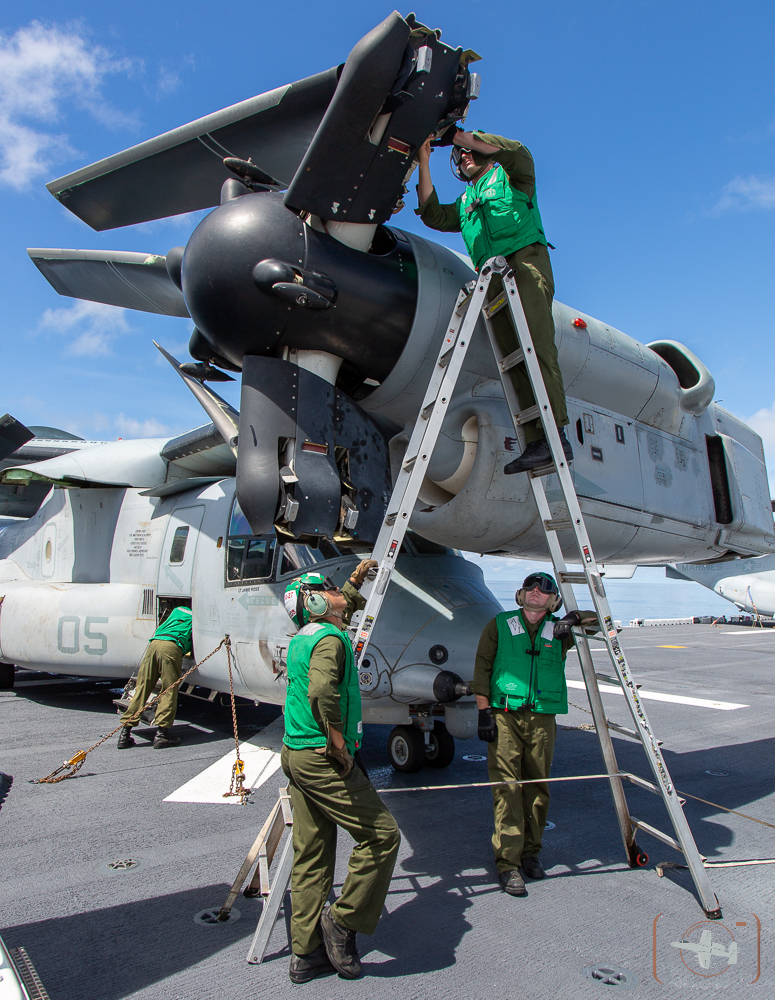
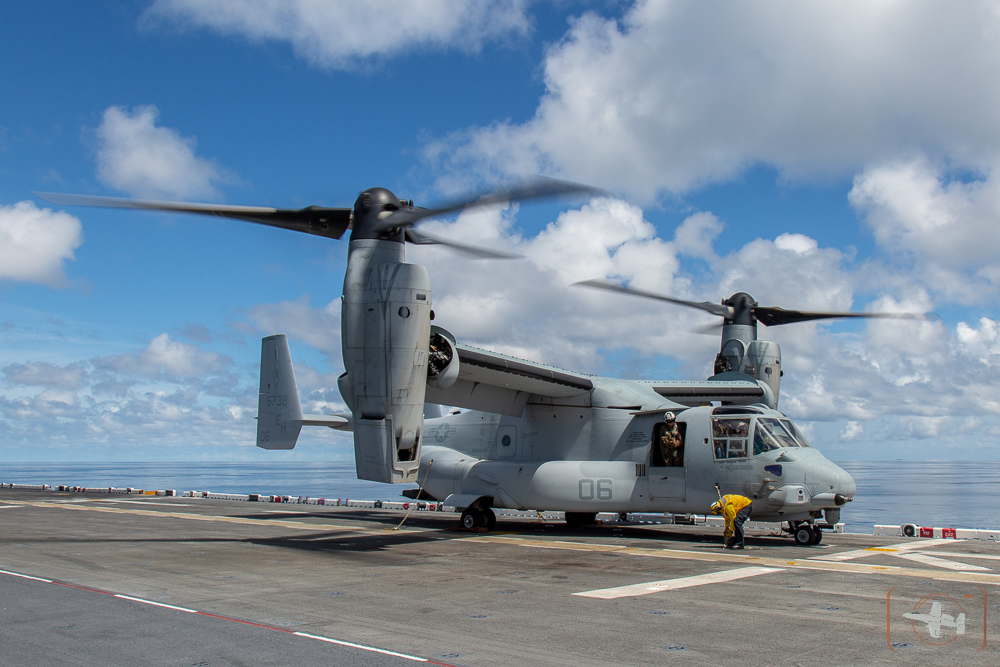
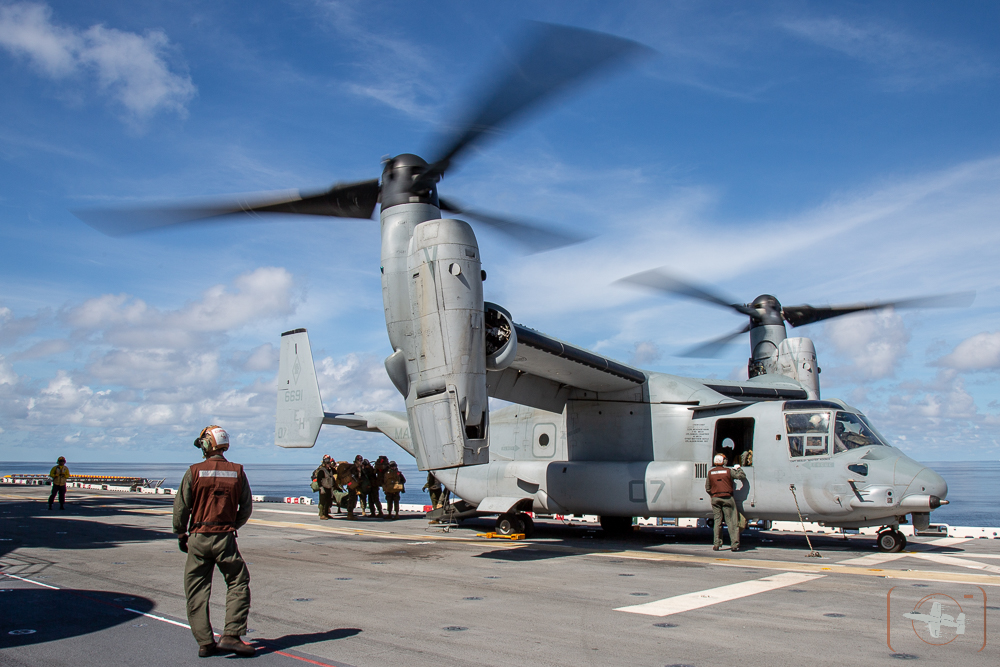
USMC MV-22B of Marine Medium Tiltrotor Squadron 264 (Reinforced) [VMM-264 Black Knights] unloads Marines from the 22D MEU BLT 1/2 on the deck of the USS Kearsarge (LHD-3) of the Kearsarge ARG during ARGMEUEX. The Aviation Combat Element (ACE) and portions of the Ground Combat Element (GCE) have just returned from an “over the horizon” Visit, Board, Search and Seizure” (VBSS) of a vessel.
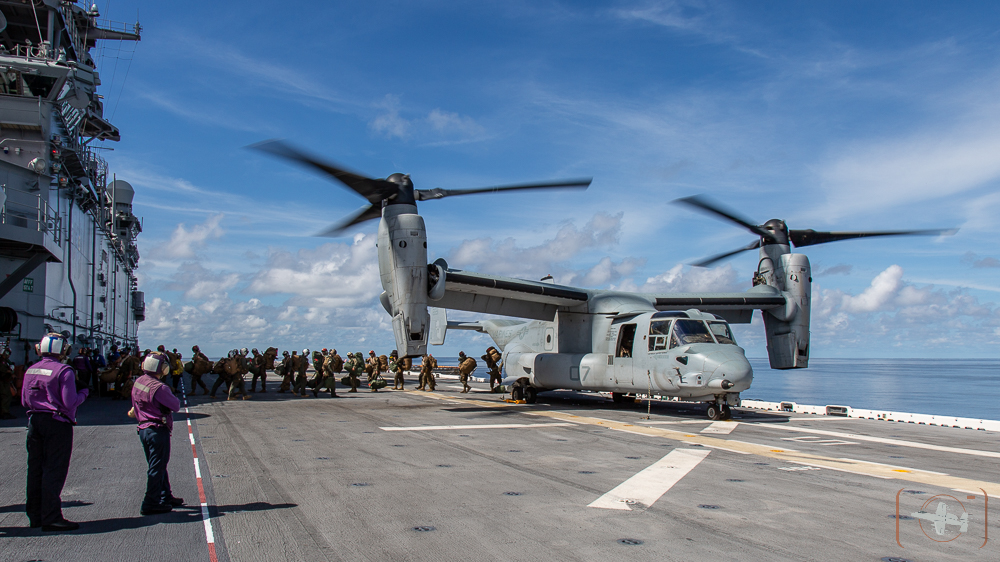
USMC MV-22B of Marine Medium Tiltrotor Squadron 264 (Reinforced) [VMM-264 Black Knights] unloads Marines from the 22D MEU BLT 1/2 on the deck of the USS Kearsarge (LHD-3) of the Kearsarge ARG during ARGMEUEX. The Aviation Combat Element (ACE) and portions of the Ground Combat Element (GCE) have just returned from an “over the horizon” Visit, Board, Search and Seizure” (VBSS) of a vessel.
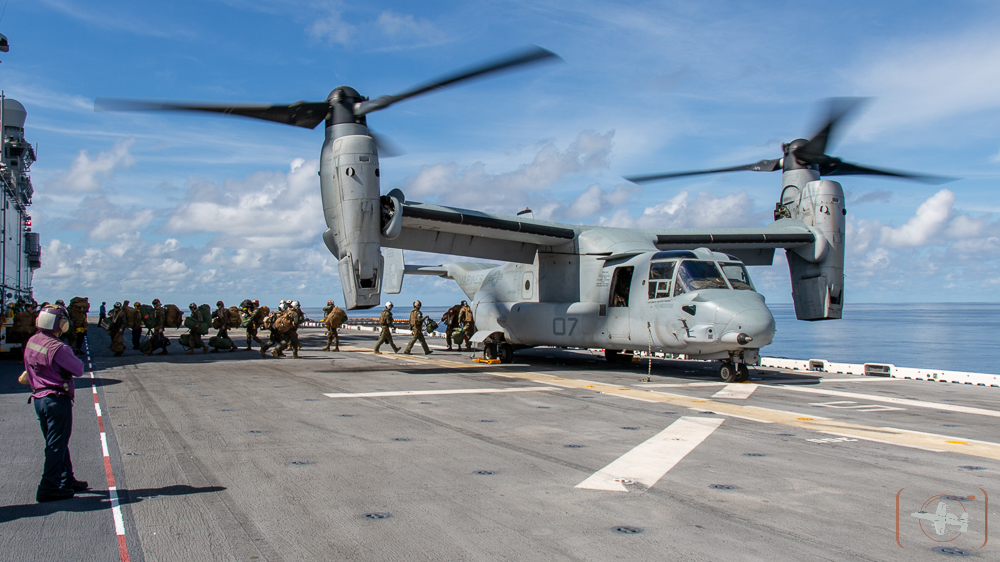
Todd Miller resides in rural Maryland west of Baltimore. Given less than required eyesight Todd’s dreams of fighter pilot were grounded, but the love of military aviation has never subsided. Todd enjoys capturing military aircraft through photography, with a particular desire to capture them in mission action. When not busy chasing jets, Todd works in the area of Business Development for a prominent flooring materials company.
Todd can be reached at: [email protected]


